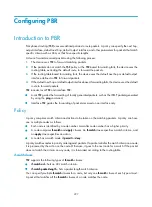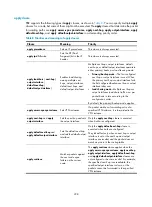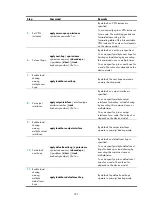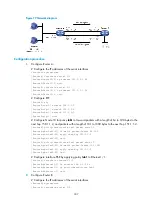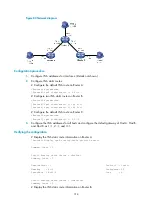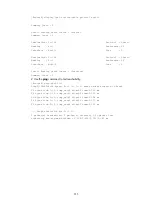
311
Configuring BFD for IPv6 static routes
BFD provides a general purpose, standard, and medium- and protocol-independent fast failure detection
mechanism. It can uniformly and quickly detect the failures of the bidirectional forwarding paths between
two routers for protocols, such as routing protocols and MPLS. For more information about BFD, see
High
Availability Configuration Guide
.
IMPORTANT:
Enabling BFD for a flapping route could worsen the situation.
Bidirectional control mode
To use BFD bidirectional control detection between two devices, enable BFD control mode for each
device's static route destined to the peer.
To configure a static route and enable BFD control mode for it, specify an output interface and a direct
next hop, or specify an indirect next hop and a specific BFD packet source address for the static route.
To configure BFD control mode for an IPv6 static route (direct next hop):
Step Command
Remarks
1.
Enter system view.
system-view
N/A
2.
Configure BFD
control mode for an
IPv6 static route.
•
Method 1:
ipv6 route-static
ipv6-address prefix-length
interface-type
interface-number next-hop-address
bfd
control-packet
[
preference
preference-value
] [
tag
tag-value
] [
description
description-text
]
•
Method 2:
ipv6 route-static vpn-instance
s-vpn-instance-name
ipv6-address prefix-length interface-type
interface-number next-hop-address
bfd control-packet
[
preference
preference-value
] [
tag
tag-value
]
[
description
description-text
]
Use either method.
By default, BFD
control mode for an
IPv6 static route is
not configured.
To configure BFD control mode for an IPv6 static route (indirect next hop):
Step Command
Remarks
1.
Enter system view.
system-view
N/A

